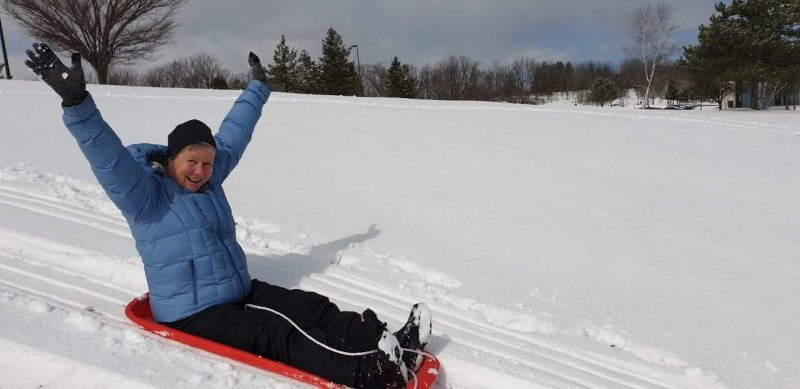Second in a 4-part series of profiles on Fulbright Distinguished Awards in Teaching recipients
While initially envious of some of her Fulbright colleagues that got sent to Arizona and warmer climates, Dianne Christenson now says she couldn’t be happier that Syracuse was ultimately selected as her destination. Not only because she got to go nearly a hundred miles per hour on a skeleton sled in Lake Placid, but also as she says, “The SU environment has so much going on. There is something to learn every day and so many opportunities. It is this tiny little ecosystem sitting on top of a hill with so many different habitats you can explore and there are wonderful things going on in all of them.” Moreover, she explains, “the willingness of the group to come together and collaborate, all from vastly different cultures, has been wonderful. Everyone has been so willing to share and accommodate each other.”

The group to which Christenson refers are the seventeen other teachers who, like her, have been selected as recipients of the Fulbright Distinguished Awards in Teaching Program for International Teachers (Fulbright DAI). All are spending this semester teaching, learning, and researching at Syracuse University’s School of Education (SOE) and within the greater Syracuse community.
An elementary science teacher from New Zealand, Dianne has observed many differences in teaching methods but also many similarities in the challenges that her fellow teachers at Franklin Elementary and her fellow Fulbright teachers face. Having worked in a high poverty area in New Zealand for twelve years now, Dianne says that she hopes to use this experience to grow her knowledge of inclusive education and project-based learning. Pursuing this goal outside her placement as well, Dianne is participating in two audit courses, Adapting Instruction for Diverse Student Needs and Teaching Academic Writing in K-12 Classrooms of which she says, “both have given me a lot of tools to put into my basket of knowledge that I can take back and implement in my own classroom.”
From a research perspective, Dianne says she has taken a great interest in “Lesson Study”, the practice of observing how students engage in learning during lessons in real time. “I’ve been enabled by some of the faculty in SOE to go to places to learn about and participate in Lesson Study,” says Christenson. This included attending the “It’s Go Time: Science For All” conference in Homer, NY and a workshop taught by Dr. Akihiko Takahashi at OCM BOCES on Lesson Study. “I see it as such an amazing way of transferring professional development back to teachers; it’s actually allowing teachers to investigate problems that are relevant to them and their school and do their own research on how to address these issues.”
Making the most of her time in Syracuse, Dianne has volunteered at Syracuse’s Samaritan Center, a community organization that provides meals for those in need. She also participated as a panelist at the Central New York Reading Council’s Spring Conference where she discussed literacy issues facing New Zealand and has been able to explore other parts of the Northeast with trips to Boston and NYC.
Of the Fulbright DAI program overall, Christenson says the most impactful thing for her has been expanding her professional network to include people from so many different backgrounds. “We’ve widened each other’s worlds and our collaboration will continue long after this program. We will not only stay in contact but many of our classes will be in contact as well,” she explains. “I will go home with so many new ideas that I will share with my school and my district and which will hopefully encourage others to apply for the program as well.”
Another benefit for Christenson has been the endless opportunities for collaboration. Emphasizing the power she believes collaboration has, not only for the teachers but for the children, she shares, “It’s widening people’s horizons to things that are out there. There are so many different ways to achieve one goal, it doesn’t have to always be the same way.”
